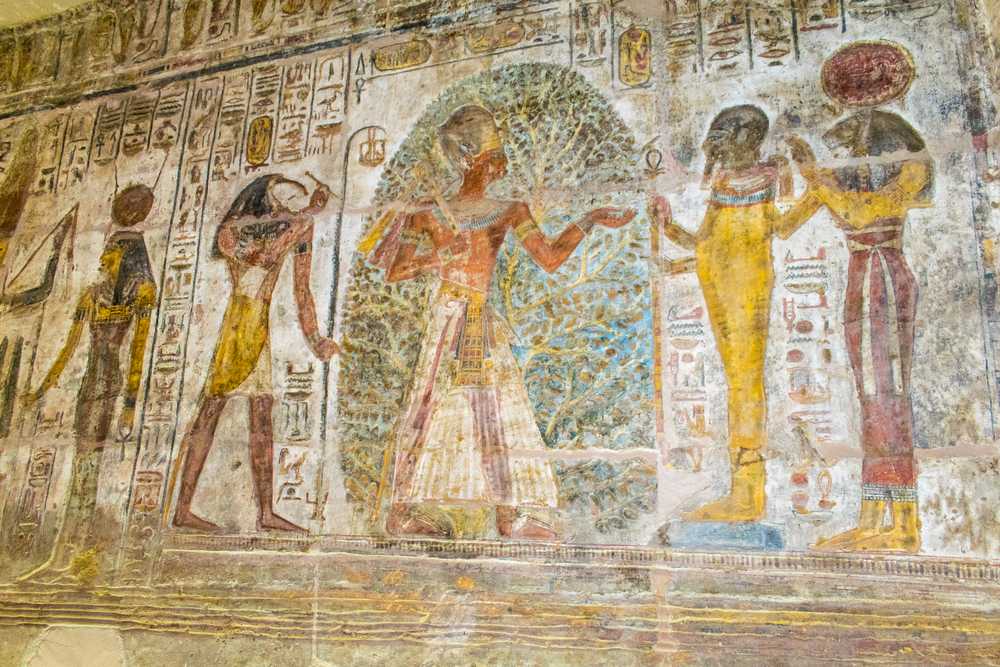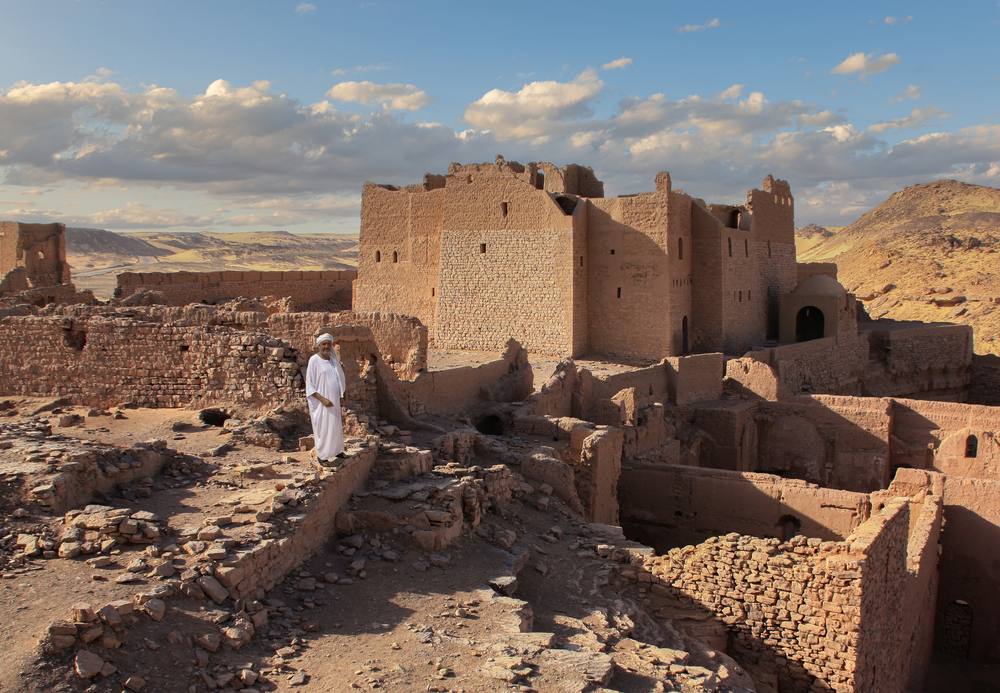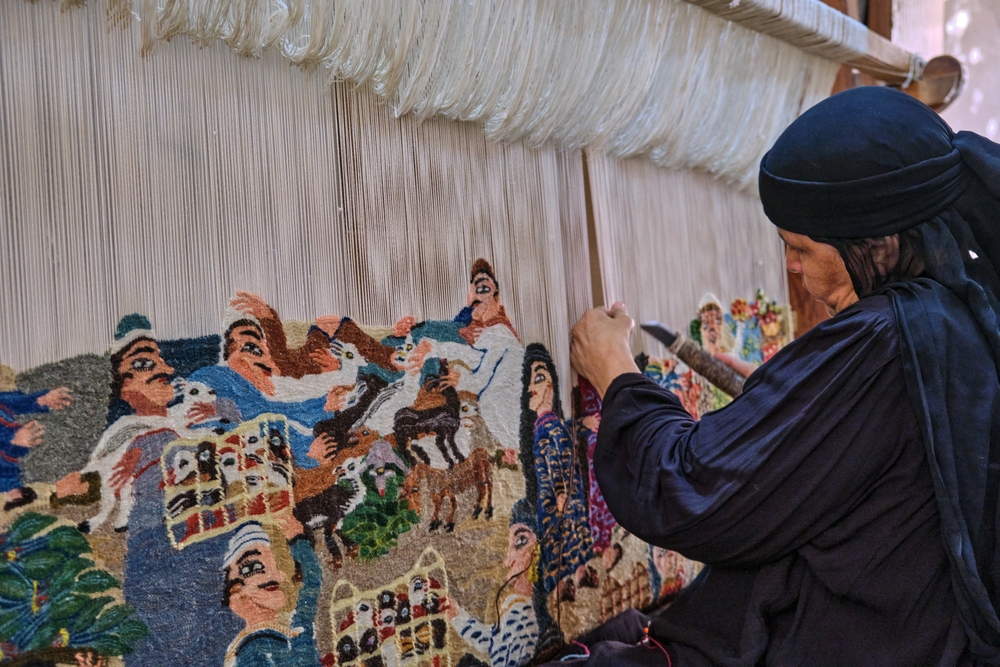When most people think of Egypt, their minds inevitably wander to the Pyramids of Giza or the temples of Luxor. While these monuments are breathtaking testaments to the ingenuity of ancient Egyptians, they are far from the only treasures Egypt has to offer.
Scattered across the country are architectural marvels that, while less celebrated, tell equally fascinating stories about Egypt’s diverse and layered history.
The Tombs of the Nobles – Aswan’s Overlooked Gem
Nestled on the west bank of the Nile in Aswan, the Tombs of the Nobles are a hidden window into Egypt’s Middle Kingdom and beyond.
These rock-cut tombs, adorned with intricate hieroglyphs and vivid wall paintings, were the final resting places of local governors and dignitaries. Unlike the grandeur of pharaohs’ tombs, these burials are understated, reflecting the lives of those who administered Egypt’s southern territories. Yet, their depictions of everyday life—agriculture, hunting, and family gatherings—offer an invaluable glimpse into ancient Egyptian society.
Fayoum’s Forgotten Pyramids
The lush oasis of Fayoum, just a short drive from Cairo, is home to some of the oldest pyramids in Egypt, predating even the Great Pyramid of Giza.
The Pyramid of Meidum, for instance, offers a beautiful glimpse into the evolution of pyramid construction. Partially collapsed, its eerie silhouette has earned it the nickname “the False Pyramid.”
Nearby, the Hawara Pyramid, constructed by Amenemhat III during the Middle Kingdom, is surrounded by legends of labyrinths and hidden treasures.
Shali Fortress – The Heart of Siwa’s History

The Shali Fortress, made from kershef (a mixture of salt, mud, and clay), dominates the skyline of Siwa.
Built in the 13th century as a fortified town, the fortress was once home to the entire Siwan population. Its winding passages and collapsed walls still whisper stories of resilience, as the fortress withstood centuries of harsh desert weather and even attacks. While much of it has crumbled, the ruins remain a symbol of Siwa’s cultural heritage, and restoration efforts are breathing new life into this iconic site.
The Serapeum of Saqqara – A Sacred Necropolis

While Saqqara is most famous for the Step Pyramid of Djoser, the Serapeum is one of its most enigmatic structures.
This underground necropolis was the burial site for the sacred Apis bulls, revered as incarnations of the god Ptah. Massive stone sarcophagi, weighing up to 70 tons, lie within these tunnels, sparking endless speculation about how ancient Egyptians transported and installed them. The site offers a fascinating blend of religious devotion and architectural mastery.
Islamic Cairo: A Living Museum

Moving into the medieval period, Islamic Cairo is a treasure trove of architectural brilliance.
While many visitors flock to the Sultan Hassan Mosque or Al-Azhar Mosque, fewer venture into the intricate lanes of Darb al-Ahmar, where hidden gems like the Blue Mosque (Mosque of Aqsunqur) and the Mosque of Aslam al-Silahdar quietly showcase Mamluk and Ottoman artistry. These spaces, with their delicate arabesque patterns, marble inlays, and serene courtyards, offer a tranquil escape from the city’s chaos.
The Nubian Monuments Beyond Abu Simbel

While Abu Simbel is iconic, the surrounding Nubian monuments, like the lesser-known Temple of Amada, are equally captivating.
Dating back to the 18th Dynasty, this small sandstone temple is Egypt’s oldest surviving temple in Nubia. The vibrant reliefs inside depict the triumphs of Pharaoh Thutmose III and Amenhotep II. Nearby, the temples of Derr and Wadi es-Sebua—less frequented by tourists—bear testimony to Nubia’s vital role in Egypt’s history.
Monasteries of Egypt

Few realize that Egypt is home to some of the oldest Christian monasteries in the world.
The Monastery of St. Anthony and the Monastery of St. Paul, nestled in the cliffs of the Eastern Desert near the Red Sea, are beautiful feats of architecture and endurance. Built in the 4th century AD, these fortified complexes still house active monastic communities and feature ancient frescoes, libraries, and artifacts that date back over 1,500 years.
Meanwhile, perched on the west bank of Aswan, the Monastery of St. Simeon is a remarkable 7th-century fortress-like complex. Once home to hundreds of monks, its walls are a testament to early Christian resilience in Egypt. The monastery’s unique architecture, blending mudbrick and stone, reflects the harsh desert conditions it was designed to endure. Inside, faded frescoes and ancient inscriptions tell the story of Egypt’s Christian heritage.
Kom El-Dikka – Alexandria’s Roman Legacy

In the heart of modern Alexandria lies Kom El-Dikka, an archaeological site that reveals the city’s Roman past.
This ancient urban center includes a small Roman amphitheater, bathhouses, and intricate mosaics. Unlike the grandeur of Rome’s Colosseum, Kom El-Dikka offers an intimate glimpse into the daily life of Roman Alexandria, including public performances and baths.
Modernist Marvels: The Forgotten Work of Ramses Wissa Wassef

Fast forward to the 20th century, and Egypt boasts another layer of architectural intrigue through the works of Ramses Wissa Wassef. A pioneering architect, his designs seamlessly integrated Egyptian tradition with modernist principles. The Ramses Wissa Wassef Art Center in Harraniya, near Giza, is a striking example, blending natural materials and open spaces to inspire creativity among local artisans.
The Legacy and Future of Egypt’s Architecture
What ties these sites together is the rich, evolving tapestry of Egypt’s architectural legacy.
From ancient dynasties to Islamic dynasties, and from Nubian influences to modernist interpretations, Egypt’s monuments are a testament to the country’s ability to adapt, innovate, and preserve. As tourism in Egypt continues to expand beyond the “big three” (Cairo, Luxor, and Aswan), these hidden gems are beginning to gain more recognition.
Egypt is more than the Pyramids. For those willing to venture off the beaten path, its forgotten architectural marvels offer unparalleled beauty, mystery, and insight into a civilization that has shaped the world for millennia.


